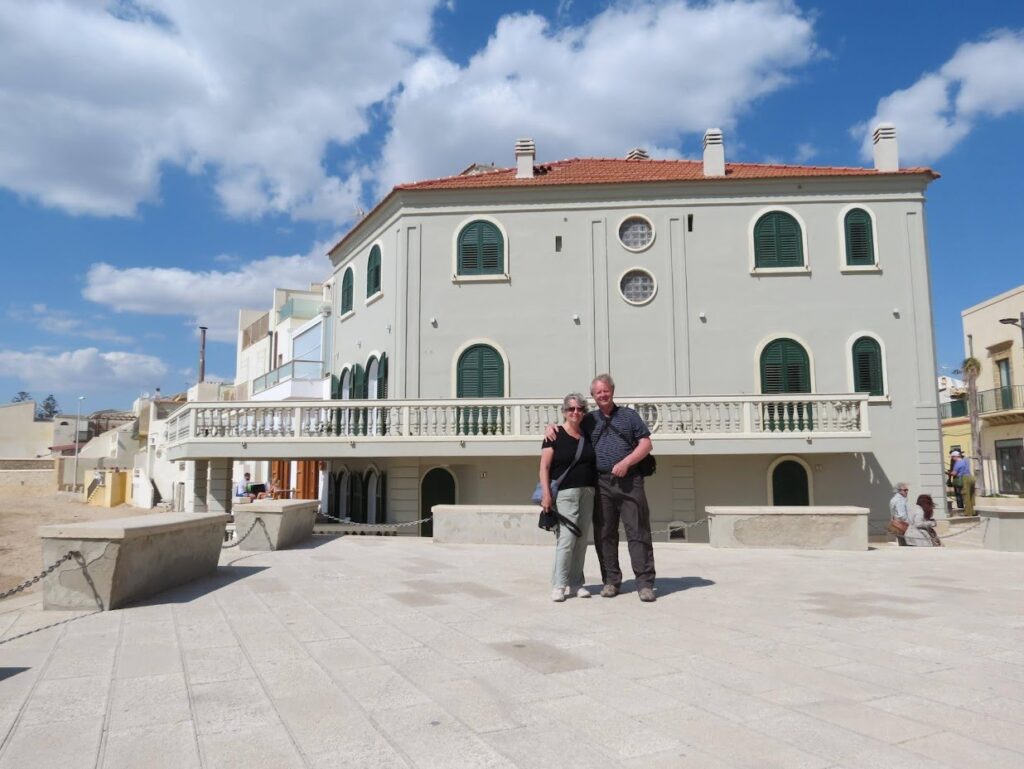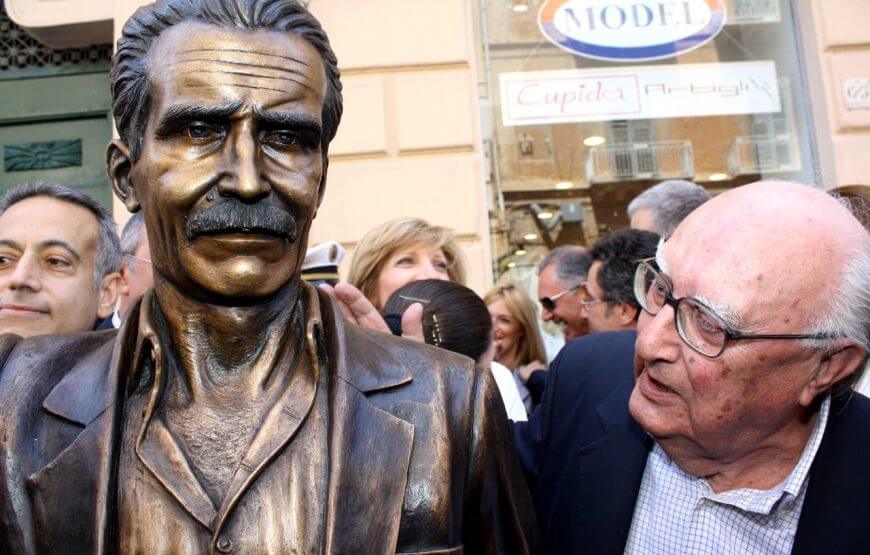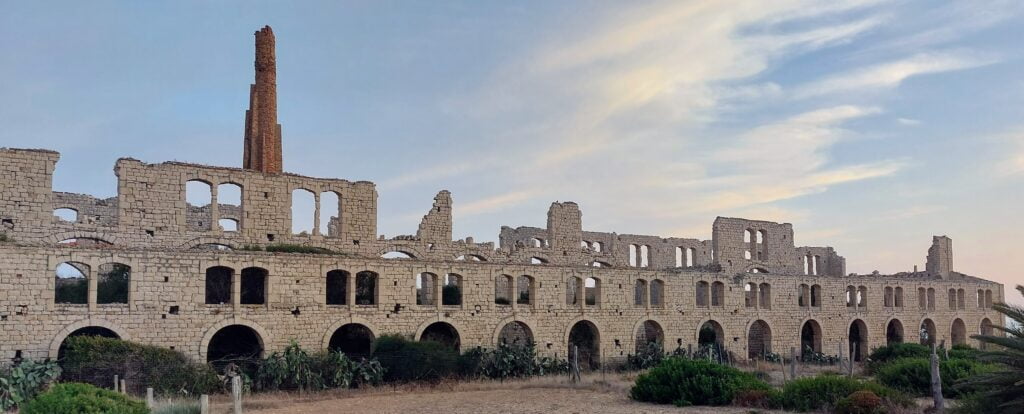


Exploring Inspector Montalbano‘s Sicily
Inspector Montalbano is a fictional character created by Italian author Andrea Camilleri. He is the protagonist of a series of crime novels set in the fictional town of Vigàta, Sicily. The novels have been adapted into a popular television series in Italy.
Sicily, the largest island in the Mediterranean Sea, provides the enchanting setting for Inspector Montalbano’s investigations. Through Camilleri’s masterful prose, Sicilian landscapes, culture, and cuisine are vividly portrayed, profoundly influencing the atmospheric tone of the stories.
The characters, including Inspector Montalbano, are intricately woven into the fabric of Sicilian life, making them inconceivable in any other setting. The island’s complexities, passions, flavors, and its mischievous inhabitants serve as an endless wellspring of inspiration for the writer from Porto Empedocle.
These tales are deeply steeped in Sicilian culture, seamlessly incorporating elements of the local language, cuisine, and unique idiosyncrasies. This authentic detail offers readers and viewers an immersive experience, allowing them to feel as though they are truly partaking in Sicilian life alongside the iconic Inspector.
In his debut novel, “Il Corso delle Cose” (The Course of Things), which remains untranslated into English, Camilleri candidly expresses his inability to envision a story set in any other locale:
“Setting a story in London or New York remains the author’s highest, yet perpetually unfulfilled, ambition… While he may know the physicality of Bond Street or Fifth Avenue, he remains ignorant of the essence of those who traverse and inhabit those spaces. Conversely, his profound familiarity with his own town allows him to imagine and comprehend even the innermost thoughts of his fellow countrymen… Having conceived a fictional narrative, he cannot help but anchor it within the familiar environs of his own streets and dwellings.”
Where is Montalbano’s Sicily? Where is Vigata?
Montalbano’s Sicily encompasses the southwestern region of the island. Vigata and Montelusa, though absent from conventional maps, are geographically situated between the hills of Girgenti and the Sea of Africa, nestled amidst Agrigento and Porto Empedocles. Other locales like Fiacca (Sciacca), Fela (Gela), Muntiriali (Realmonte), Gaddotti (Giardina Gallotti), and Raccadali (Raffadali) paint a picture of coastal and inland Sicily, characterized by its harsh, parched landscapes and precarious hillside dwellings, seemingly teetering on the edge.
A distinct portrayal of Sicily emerges in the TV episodes, utilizing a variety of locations clustered around Ragusa in the island’s southeast. These include Ibla, Scicli, Modica, Punta Secca, and other charming seaside villages, ingeniously pieced together to craft the fictional town showcased in the TV series. This version of Sicily showcases stunning landscapes, beautiful Baroque churches, and breathtaking views that have enraptured millions of viewers in Italy and beyond.
Montalbano’s Filming Locations
Key scenes from the series were filmed at various main locations:
Punta Secca
In the series, Inspector Montalbano’s house is located in the coastal village of Punta Secca, just south of Santa Croce Camerina. This beautiful seafront house, which serves as Montalbano’s home in “Marinella”, is now a bed and breakfast situated just off the main square called Piazza Montalbano .
Scicli
The “Vigata” police station, where Montalbano undertakes much of his detective work, is actually the town hall of Scicli located on Via Mormino Penna. This street is part of Scicli’s old town center, recognized as a UNESCO World Heritage Site .
Ragusa
Many scenes are filmed in and around the beautiful Piazza Duomo of Ragusa Ibla, featuring the impressive Cathedral of San Giorgio. Montalbano’s frequented lunch spot in the series, ‘Trattoria San Calogero’, is actually Trattoria La Rusticana located in Corso XXV Aprile. Ragusa’s panoramic views often provide the backdrop for various scenes in the series3.
Modica
The series also features Modica, a baroque town known for its photogenic architecture including the Church of San Giorgio and Palazzo Polara. The town’s beauty has lent itself to various episodes of the series .
Il Castello di Donnafugata
This castle serves as the luxurious residence of Mafia boss Balduccio Sinagra in the series. It is located approximately 18km west of Ragusa and is open to the public .
Beaches
Montalbano’s ventures often take him to the sands of Donnalucata and Sampieri, south of Scicli. Sampieri beach is particularly noteworthy for featuring the “Mannara”, a ruined brick factory that stars as a tuna fishery in the series.
Differences Between Camilleri’s Literary Sicily and Its TV Portrayal
Andrea Camilleri’s Inspector Montalbano novels paint a vivid picture of life in Sicily, showing the island’s beauty and its people’s complexities. But how Sicily is portrayed in the books can be different from how it’s shown on TV.
Here’s why:
- Authenticity and Stereotypes: Camilleri’s stories try to show Sicily and its people as they really are, avoiding stereotypes often seen in movies and TV shows. The novels aim to capture the true humanity of Sicilians, including their humor and contradictions, while also showing the island’s wonder and pain.
- Cultural and Historical Representation: Camilleri’s Sicily doesn’t just focus on the present; it also explores the island’s past, including historical events that still affect life there today. This historical depth can be harder to convey on TV compared to in books, where readers can imagine more.
- Focus on Characters and Social Issues: Camilleri’s novels delve into the characters’ thoughts and feelings, and they also tackle important social issues in Sicilian society, like corruption and the Mafia. These elements might not get as much attention in a TV adaptation because of time limits and the need for visual storytelling.
While both the novels and the TV series capture the essence of Sicily, differences exist in their portrayal. Camilleri’s novels delve deeper into Sicilian history and social issues, offering a nuanced understanding that may not fully translate to the screen. However, regardless of the medium, Inspector Montalbano’s Sicily remains an essential narrative backdrop and a character in its own right, enriching the stories with its unique charm and influence.
For a deeper dive into the spirit of the series and the books book one of our Montalbano tours:

